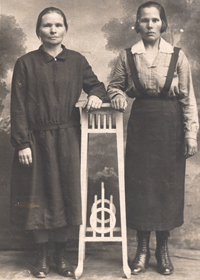Tracing the Memory of Goodness
Irena Steinfeldt, Director of the Righteous Among the Nations Department
When Yad Vashem was established in 1953, a mere eight years after the Shoah, paying tribute to the Righteous was included in its mission. Struggling with the enormity of the loss and the effects of the total abandonment and betrayal of Europe’s Jews, the young State of Israel resolved to remember non-Jews who had taken great risks to save Jews during the Holocaust. The motivation was of course a deep sense of gratitude, but it was coupled with a profound need, so well expressed by Primo Levy when he talked about his rescuer Lorenzo Perrone: "I believe that it was really due to Lorenzo that I am alive today; ... for his having constantly reminded me by his presence… that there still existed a just world outside our own… for which it was worth surviving" (If This Is A Man). In a world where Auschwitz was a reality, it was essential to emphasize that Man was also capable of defending and maintaining human values.
The Righteous Among the Nations program is an unprecedented attempt by victims to pay tribute to people who stood by them at a time of persecution and tragedy. Its purpose is to single out, within the nations of perpetrators, collaborators, and bystanders, individuals who bucked the general trend and protected Jews from death and deportation. Underpinned by the reaffirmation of faith in the future of Mankind, the program therefore is also a testament to the resilience of the victims who did not sink into bitterness and revenge but embraced human values. In a world where violence more often than not breeds more violence, this is a remarkable phenomenon.
The decision to bestow the title of Righteous is made by an independent commission whose members are mostly Holocaust survivors. The commission is chaired by a retired justice of Israel’s Supreme Court and has a well-defined set of rules and criteria. Since hiding and rescue of Jews were done in secret, rarely leaving a paper trail, the program relies mainly on testimony. For obvious reasons the title cannot be based only on statements by the rescuers or their family, consequently the main evidence in the process of recognition is detailed survivor testimony that describes the rescue and the circumstances. With the passing of time, survivors who turn to us today naturally were young children at the time of the Holocaust, and it is becoming increasingly difficult to piece together the stories and substantiate the cases. On the other hand the growing accessibility to various testimony collections often enables us to find the necessary evidence, even when the witnesses are no longer alive. In this endeavor we greatly rely on Yad Vashem's extensive repositories and on the sophisticated knowledge tools that enable us to find specific information.

Vera Karatkevich (Left) with Relative
This was the case when we investigated the rescue of Ida Lekach and her children. When Shlomo Lekach turned to the Department of the Righteous with the request to honor Vera Karatkevich and her daughter Lidia (Anufriyeva), we were able to find testimonies that Yad Vashem had gathered in 1962 from Shlomo's mother Ida and his sister Cyla. From these testimonies we learned that Ida Lekach, the daughter of Rabbi Gilman, was born in the village of Shpakovshchina, 25 kilometers southeast of Dzisna. When her Belorussian friend Vera married, and could not afford a wedding gown, Ida bought fabric and sewed a dress for the bride. Ida married, moved To Dzisna, and in 1918 the two friends were separated by a border - Dzisna became part of Poland, while Shpakovshchina became part of the USSR. In the beginning of July 1941 the entire territory was occupied by Nazi Germany. Ida’s family was incarcerated in the ghetto of Dzisna, and on June 15, 1942, during the liquidation of the ghetto, as the Lekachs tried to escape, Ida and her son Shlomo were separated from the rest of the family. They set off for Shpakovshchina, hoping to find shelter in Ida's native village. Arriving in Shpakovshchina they found Tsilya, one of Ida’s daughters, and another Jewish friend. When Vera heard that her Jewish friend had managed to survive, she immediately offered to hide her. Even though Vera was a widow and extremely poor, she opened her home to the four fugitives. Tsyla and Shlomo eventually joined the partisans, but Ida stayed at Vera's home until liberation. After the war Ida Lekach learned that her husband Leizer and her youngest children Nechama and Hirsh had perished in the Holocaust. She reunited with her surviving children and they immigrated to Israel. In 2008, more than 64 years after the events, only Shlomo Lekach was still alive. Nevertheless the Commission for the Designation of the Righteous was able to examine the testimonies and decided to award the title of Righteous Among the Nations on Vera Karatkevich and her daughter Lidia (Anufriyeva). Thus testimonies that were deposited in the Yad Vashem archive fifty years earlier enabled the family to repay a debt of gratitude to their wartime rescuers.
Irena Steinfeldt is Director of the Righteous Among the Nations Department at Yad Vashem.
